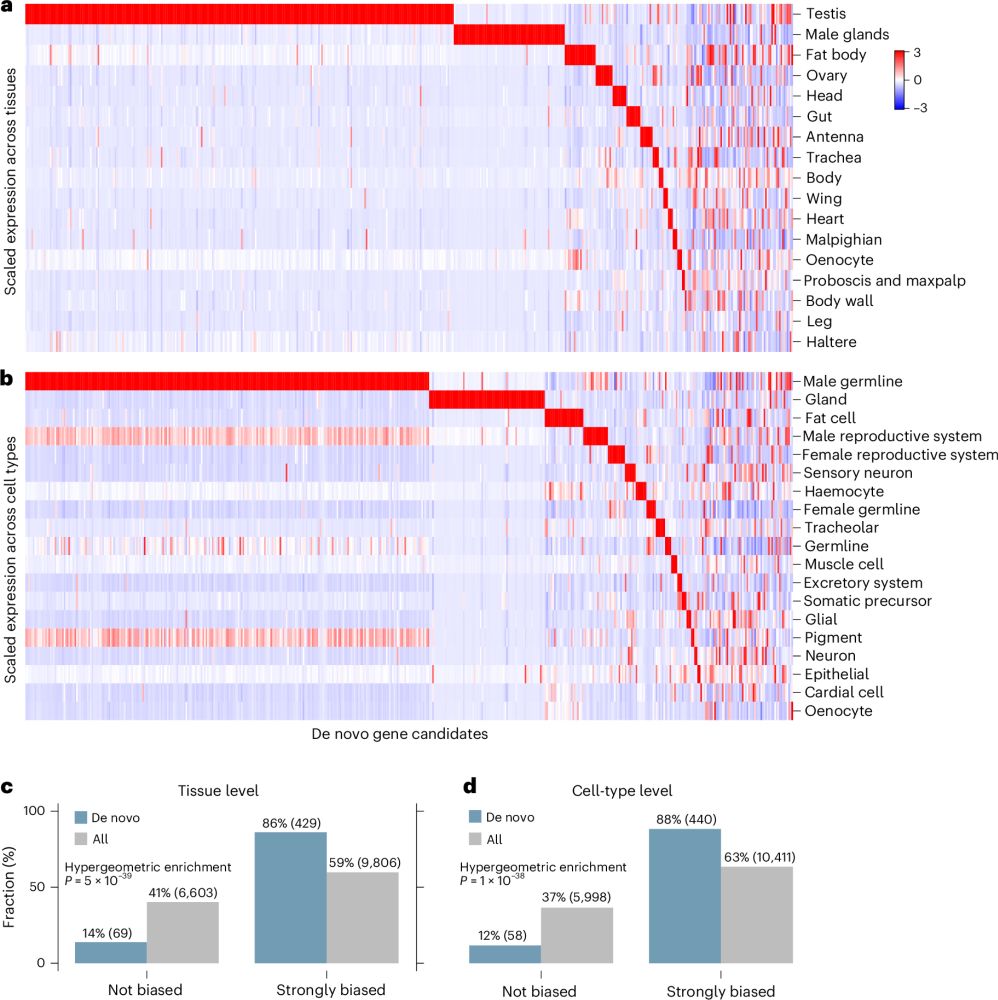
Type I CRISPR-Cas immunity primes type III spacer acquisition
CRISPR-Cas systems are diverse, with microbes harboring multiple classes and subtypes. Type I DNA-targeting and type III RNA-targeting systems often c…
Ever wondered why some bacteria have multiple CRISPR-Cas systems? Our new study led by Leah Smith shows how type I CRISPR systems can promote the acquisition and retention of new spacers into a co-occuring type III system. www.sciencedirect.com/science/arti...
18.08.2025 15:06 — 👍 62 🔁 25 💬 5 📌 0

a cartoon drawing of a cat flying through space
ALT: a cartoon drawing of a cat flying through space
We finish this manuscript with more questions than we started with... a good sign! 🤓
What are these capsids transporting? Which cells release them?? Where do they go???👾🧑🚀
So, stay tuned: even in the tiny fly brain, these mechanisms might reveal how similar processes operate in our own. 🧠✨
12.08.2025 18:36 — 👍 1 🔁 1 💬 1 📌 0
📢 Fresh off the press! Our article on Arc is out in @currentbiology.bsky.social:
www.cell.com/current-biol...
🧶 Full thread on our discoveries here: bsky.app/profile/thec...
12.08.2025 18:36 — 👍 71 🔁 18 💬 1 📌 0
piRNAs are essential for transposon silencing in the animal germline.
But how do hosts trap transposon sequences in genomic loci that help establish a piRNA response?
Looking at a natural transposon invasion, Baptiste Rafanel and Kirsten Senti made some remarkable observations.
03.08.2025 15:39 — 👍 60 🔁 20 💬 4 📌 1
Pls. share widely
Calling all transposon fans & lovers of genetic innovation
MOBILE GENOME welcomes you in Heidelberg, Nov. 4–7 2025
→ Vibrant & friendly community
→ Cutting-edge talks from mechanisms to physiology
→ Plenty of surprises (TEs never stop innovating)
submit abstract by July 29
16.07.2025 08:43 — 👍 61 🔁 48 💬 1 📌 1
YouTube video by Université Côte d'Azur
White Board #1 : L'histoire des gènes sauteurs
Connaissez-vous l'histoire des gènes sauteurs ?🧬
Dans cette vidéo, Gaël Cristofari, chercheur ( #UniCA, @cnrs.fr, @inserm.fr) explique de manière claire et illustrée comment ces gènes se déplacent et quel rôle essentiel ils jouent dans notre génétique.
➡️https://youtu.be/twtOhB-TPJk?feature=shared
09.07.2025 09:46 — 👍 3 🔁 2 💬 0 📌 0
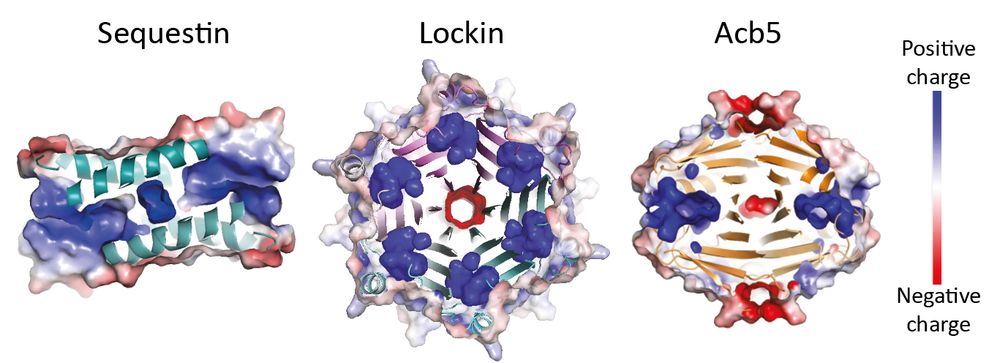
📢Preprint out!
Excited to share my final work from the @soreklab.bsky.social!
We mined phage dark matter using structural features shared by anti-defense proteins (viral tools that help phages bypass bacterial immunity) to guide discovery.
Found 3 new families targeting immune signaling!
13.07.2025 07:48 — 👍 86 🔁 45 💬 3 📌 8
Vertebrate retrotransposons are the future of gene therapy. But how do they insert their genes? 🔥🔥
Thrilled to share our new work now published with Kathy Collins, @nogaleslab.bsky.social @berkeleymcb.bsky.social where we investigate this with #cryoEM & biochemistry in 🧪 and cells! #RNAsky #TEsky
23.06.2025 16:19 — 👍 68 🔁 21 💬 2 📌 2

An E. coli cell being lysed by bacteriophages
🚨New paper!
A prophage-encoded sRNA limits lytic phage infection in adherent-invasive E. coli.
Huge thanks to members of the Round Lab, @duerkoplab.bsky.social, Wiedenheft Lab, and phage legend Sherwood Casjens.
#microsky 🦠🧫🧪🧬
www.biorxiv.org/content/10.1...
07.05.2025 13:39 — 👍 26 🔁 11 💬 1 📌 2
Effective population size does not explain long-term variation in genome size and transposable element content in animals
In @elife.bsky.social: Effective population size does not explain long-term variation in genome size and transposable element content in animals doi.org/10.7554/eLif...
This is the revised version of our manuscript, which will become the final published version !
19.06.2025 08:17 — 👍 28 🔁 16 💬 2 📌 0
Thanks to all the co-authors for their work and input on the manuscript. @asantiagofrangos.bsky.social @lainahall.bsky.social
18.06.2025 01:21 — 👍 0 🔁 0 💬 0 📌 0
It's an exciting time to be studying CRISPR adaptation - check out related work in the type II-A system by @giedriussasnauskas.bsky.social:
www.biorxiv.org/content/10.1...
and also:
www.biorxiv.org/content/10.1...
18.06.2025 01:21 — 👍 0 🔁 0 💬 1 📌 0

Full integration requires two sequential transesterification reactions. Focusing on the CRISPR repeat, we learned that the CRISPR repeat is distorted at key conserved purine-pyrimidine steps as it passes from the first transesterification site to the second.
18.06.2025 01:21 — 👍 0 🔁 0 💬 1 📌 0

We next added short fragments of foreign DNA with and without a protospacer adjacent motif (PAM), to understand why the PAM blocks integration into the CRISPR array.
We learned that foreign DNA length alters the complex stability, and that adding 2 bp makes all the difference.
18.06.2025 01:21 — 👍 0 🔁 0 💬 1 📌 0

Cas1-2/3 integrase bound to foreign DNA. The foreign DNA fragment binds to the positively charged channel. The propeller arms formed by the Cas3 lobes rotate out, creating a dogbone shape that exposes three additional DNA-binding channels.
We next determined the structure of the complex formed by adding a short foreign DNA fragment to Cas1-2/3. Foreign DNA binding triggers dramatic conformational changes that expose new DNA binding surfaces necessary for homing the integrase to the CRISPR locus.
18.06.2025 01:21 — 👍 0 🔁 0 💬 1 📌 0

Intriguingly, we saw that in this DNA-unbound conformation, a short loop in the Cas3 RecA1 domain covers the nuclease active site, much like a latched gate.
Comparing Cas3 in this OFF state to a previously nuclease ON state reveals the gate swings open when the nuclease is active.
18.06.2025 01:21 — 👍 0 🔁 0 💬 1 📌 0

cryoEM structures of the Cas1-2/3 integrase. The heterohexamer assembles into a four-bladed propeller, with one face lined with positively charged residues.
We wanted to understand how this fantastic genomic knot assembles, so we set out to determine multiple structures of the Cas1-2/3 complex at distinct stages of CRISPR adaptation.
In the absence of DNA, Cas1-2/3 forms a prominent, positively charged channel on one face of the complex.
18.06.2025 01:21 — 👍 0 🔁 0 💬 1 📌 0

A schematic of a bacterial cell being infected by a phage, with the Cas operon and CRISPR locus detailed. The Cas1-2/3 integrase adopts distinct conformations during the capture, delivery, and integration of a short fragment of the phage DNA.
New preprint from the Wiedenheft lab!
We used #cryoEM to show how a type I-F #CRISPR integrase captures, delivers, and integrates foreign DNA.
www.biorxiv.org/content/10.1...
18.06.2025 01:21 — 👍 5 🔁 1 💬 1 📌 1
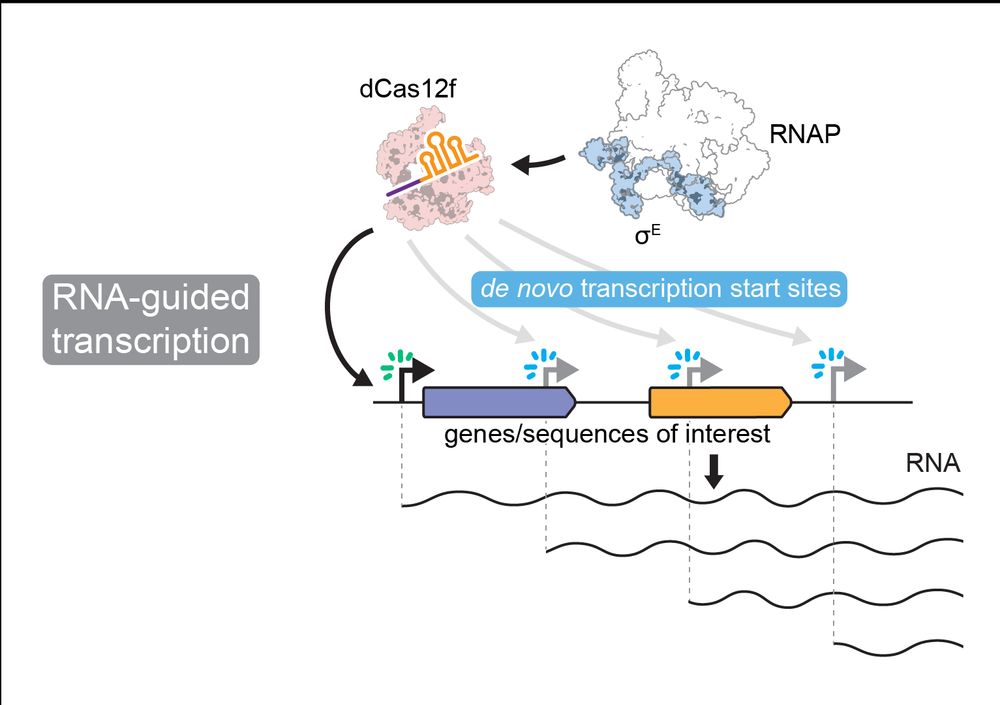
1/10 New pre-print(s) from the Sternberg Lab in collaboration with Leifu Chang's Lab! We uncover the unprecedented molecular mechanism of CRISPR-Cas12f-like proteins, which drive RNA-guided transcription independently of canonical promoter motifs.
Full story here:
www.biorxiv.org/content/10.1...
11.06.2025 16:03 — 👍 86 🔁 39 💬 3 📌 3
HMMER is the bedrock of genomic annotation globally, and now its funding is terminated for no reason.
@cryptogenomicon.bsky.social is now on bsky:
28.05.2025 16:25 — 👍 53 🔁 42 💬 2 📌 1
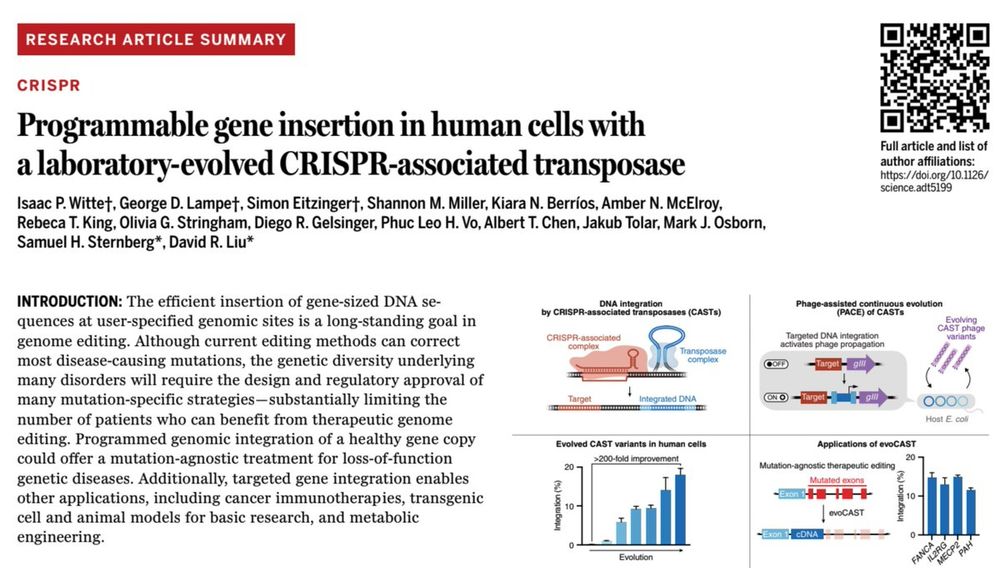
1/10 Today in @science.org in collaboration with
the Liu group we report the development of a laboratory-evolved CRISPR-associated transposase (evoCAST) that supports therapeutically relevant levels of RNA-programmable gene insertion in human cells. drive.google.com/file/d/1I-Ub...
15.05.2025 22:49 — 👍 132 🔁 59 💬 2 📌 5
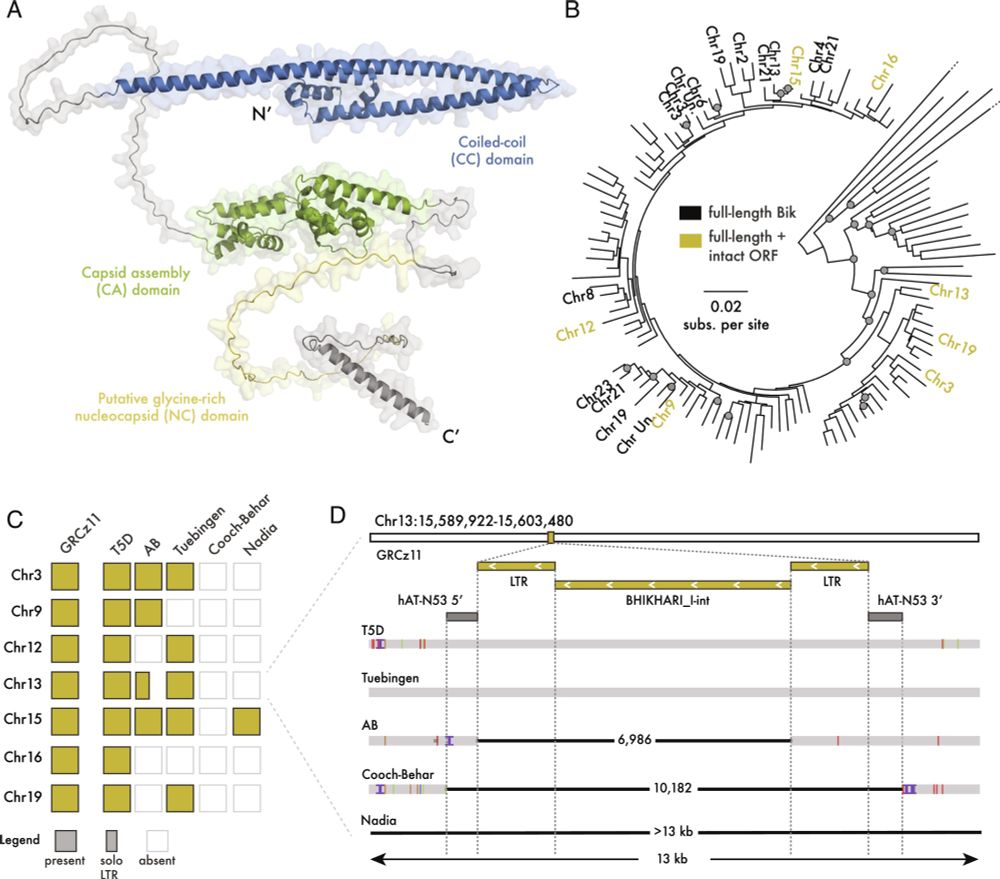
Gag proteins encoded by endogenous retroviruses are required for zebrafish development | PNAS
Transposable elements (TEs) make up the bulk of eukaryotic genomes and examples abound
of TE-derived sequences repurposed for organismal function. ...
💥🥳 At long last, our latest paper is out!
Gag proteins of endogenous retroviruses are required for zebrafish development
www.pnas.org/doi/10.1073/...
Led heroically by Sylvia Chang & @jonowells.bsky.social
A study which has changed the way I think of #transposons! No less! 🧵 1/n
30.04.2025 10:44 — 👍 258 🔁 108 💬 14 📌 21
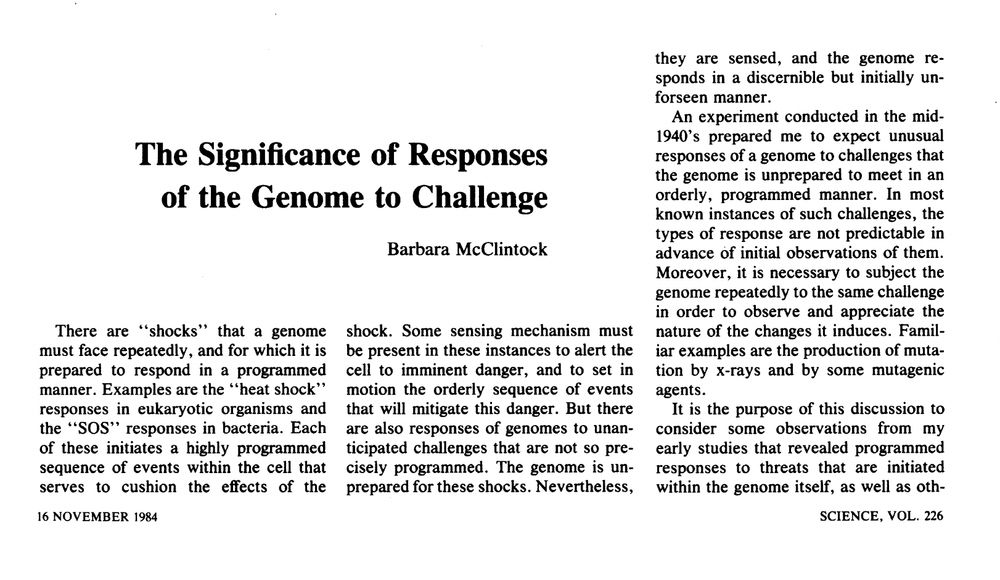
Barbara McClintock proposed – over 40 years ago – that transposable element activity could be a response to stress, and I think that we are still only beginning to understand how right she was.
28.04.2025 02:26 — 👍 90 🔁 20 💬 2 📌 1
PhD student and artist discovering transposable elements in deep sea (Abyssal and Hadal) amphipods. No AI.
https://linktr.ee/tillyscott
Engineer and molecular biologist. Curious about the world and optimistic to make it better.
Prof. and Head of Phage-host interactions (Phi) lab. Phage defences, counter-defences, CRISPR-Cas, toxin-antitoxin. FRSNZ / James Cook Fellow
Postdoc | bacterial defence systems ⚔️🛡️🦠
BIF PhD fellow in the Brennecke lab (@juliusbrennecke.bsky.social) at IMBA (@imbavienna.bsky.social), Vienna
Interested in transcription and RNA export.
http://www.oeaw.ac.at/imba/research/julius-brennecke
Studying past, present, and potentially future host-viral interactions 💀👨🏻💻👨🏻🔬🦠 #loveVirology #LatinxInSTEM 🇲🇽 | Assistant professor
@fredhutch.bsky.social - https://research.fredhutch.org/blanco-melo/
Computational biologist @WeillCornell focusing on methods development, genomics, and the retrotranscriptome.
archaea, methane, single cell physiology, single cell activity, next generation physiology / for evidence-based decision-making / I hold strong opinions / I don’t mince words / posts reflect personal views / www.environmental-microbiology.com
Professor, Molecular & Cellular Biology, Harvard University
Ribosomes and RNA language models.
Professor at UC Berkeley.
https://sites.google.com/berkeley.edu/cate-lab/home
Helen Hay Whitney Foundation fellow in Harmit Malik lab at Fred Hutch | I study evolutionary adaptation | http://tamanashbhattacharya.wordpress.com
News from the Sternberg lab at Columbia University, Howard Hughes Medical Institute.
Posts are from lab members and not Samuel Sternberg unless signed SHS. Posts represent personal views only.
Visit us at www.sternberglab.org
Prof at Cornell, #firstgen, immigrant 🇫🇷🇺🇸. Transposons, viruses, and all the cool stuff genomes are made of. https://www.feschottelab.com
Scientist, artist, educator, chef, fisherman, outdoor enthusiast, bookworm, linguist, peacemaker, volunteer, etc. in no particular order.
Please don't ask because I will not date you, I will not send you money, and I will not be your disciple. Thanks.
Molecular bio(techno)logist/adventurer. Fascinated by the molecular gears that underly life and evolution ⚙️🧬👩🔬
Views are my own
Synthetic Biology. Designer cells and organelles. Space plants and microbes. Antifungal. Antimicrobials. Optimization of DNA delivery: conjugation, cell fusion. Western University, Canada.
Gene regulation in health and disease | Professor/Vice-Chair @UCSF Dept. of Biochemistry and Biophysic | via Stanford, UCSF and MIT | https://madhanilab.ucsf.edu







